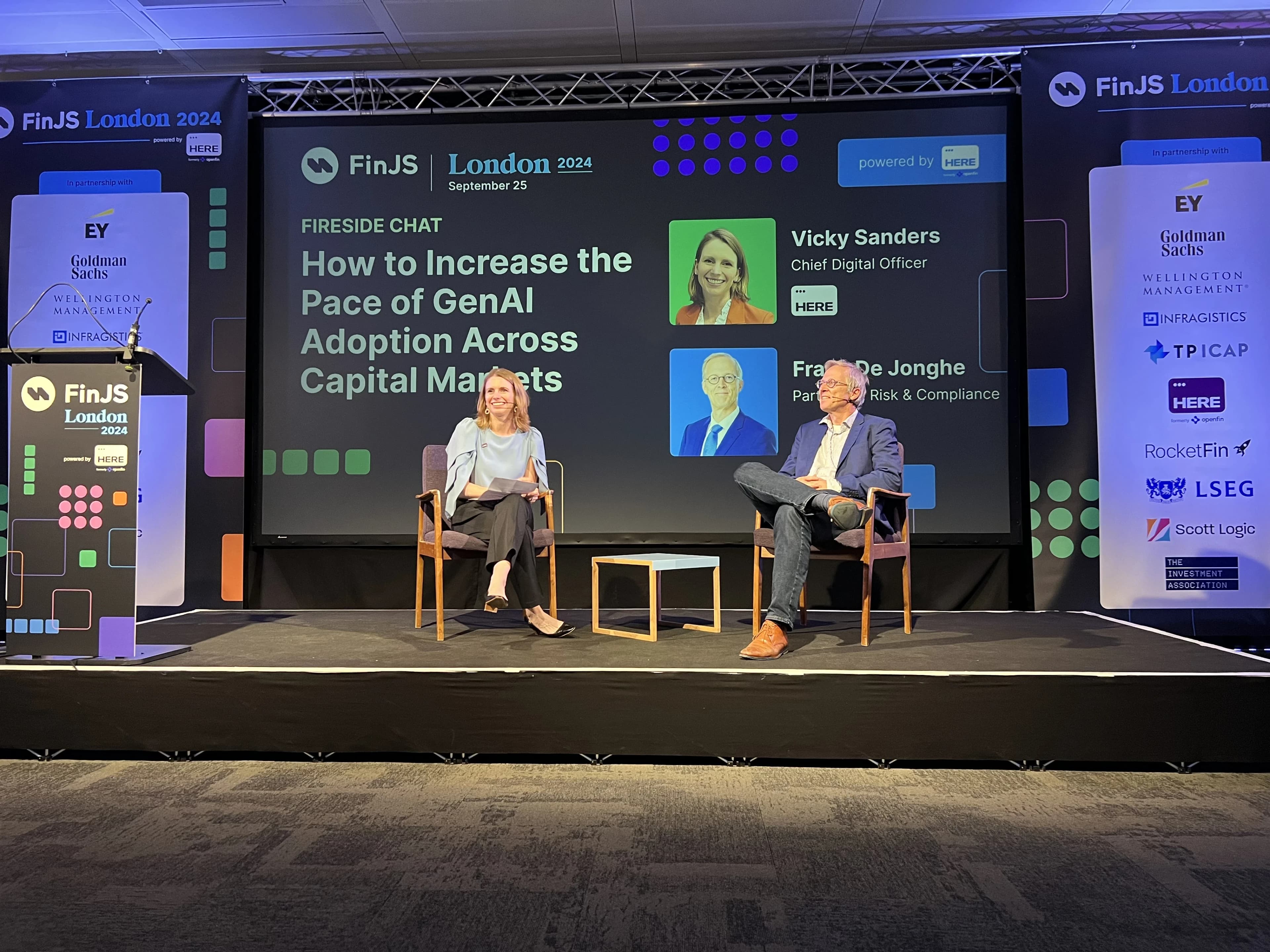Navigating the GenAI Revolution in Financial Services: From Hype to Reality
I was at a recent talk at FinJS London, where Frank De Jonghe from EY and Vicky Sanders from Here shed light on the evolving journey of GenAI adoption. Let's break down the key takeaways and what they mean for the industry.
The Shift from Discovery to Implementation
2023 was all about marveling at the capabilities of GenAI. We were like kids in a candy store, amazed by what these models could do. But 2024 is where the rubber meets the road. We're now facing the "long and tedious road" of turning these capabilities into actual productivity gains. This transition is crucial because it's where theory meets practice.
# 2023: Discovery Phase
ai_capabilities = discover_genai_potential()
# 2024: Implementation Phase
productivity_gains = implement_genai(ai_capabilities)Starting Small: Back-Office Efficiency
Where's the low-hanging fruit? It's in the back office. Financial institutions are targeting repetitive tasks where the risks are lower, and the efficiency gains are more tangible. Think about tasks like summarizing reports or answering internal compliance questions. These are perfect starting points because they're:
- Structured
- Lower risk
- Easier to measure in terms of efficiency gains
The Human-in-the-Loop Approach
One of the most interesting strategies discussed is the gradual reduction of human involvement. Companies are starting with a significant human presence (30-40%) in the AI workflow and then slowly dialing it back. Here's a conceptual model of how this might work:
def ai_workflow(task, human_involvement_percentage):
ai_output = ai_process(task)
if human_involvement_percentage > 0:
human_review(ai_output)
return final_output
# Initial phase
result = ai_workflow(task, human_involvement=40)
# As confidence grows
result = ai_workflow(task, human_involvement=20)
# Future state
result = ai_workflow(task, human_involvement=5)This approach allows organizations to build trust in the AI system gradually while collecting valuable data on its performance.
Tackling the Black Box Problem
Large language models are fundamentally different from the transparent algorithms we're used to in finance. We can't simply "look under the hood" as we did with traditional models. So, how do we gain confidence? The focus is shifting to:
- Rigorous testing of functionality
- Continuous monitoring of performance
- Establishing clear decision points in workflows
It's less about understanding every neuron in the network and more about validating the outputs and their consistency over time.
Three Paths to GenAI Adoption

a) Custom Applications: Building tailored solutions using AI engines.
b) Desktop Democratization: Putting AI tools directly in employees' hands.
c) AI-Enhanced Services: Leveraging third-party offerings powered by GenAI.
Each path has its merits and challenges. The key is choosing the right approach for your organization's needs and readiness.
Cross-Functional Collaboration is Key
One of the most underappreciated aspects of AI adoption is the need for different departments to speak the same language. IT, compliance, and business units need to be on the same page. This isn't just about technology; it's about organizational change management.
The Balancing Act: Innovation vs. Risk
Early adopters are walking a tightrope. They need to move fast to reap the benefits of GenAI, but a single major mistake could erode trust and set the whole program back. This calls for a meticulous approach to risk management without stifling innovation.
Continuous Monitoring: The New Normal
With GenAI, you can't just "set it and forget it." Continuous monitoring is crucial, especially for customer-facing applications. The good news? Cloud platforms often come with built-in monitoring capabilities. It's about leveraging these tools effectively.
The Importance of Vendor Transparency
As financial institutions rely more on third-party AI models, they need clear information on how these models perform across different demographics and languages. This is crucial for ensuring fair and consistent application, especially in diverse markets.
Conclusion
The adoption of Generative AI in financial services is not a sprint; it's a marathon. It requires a balanced approach that considers technological capabilities, risk management, and organizational dynamics.
Remember, in the world of AI, slow and steady might just win the race.


